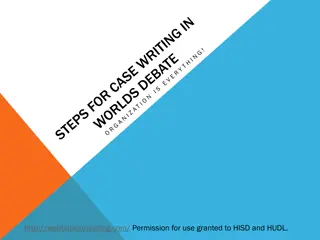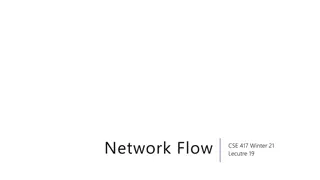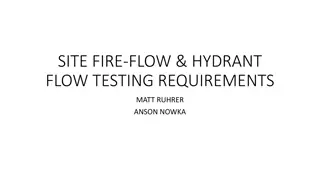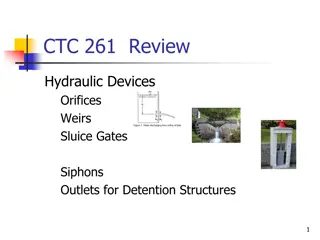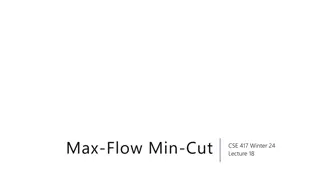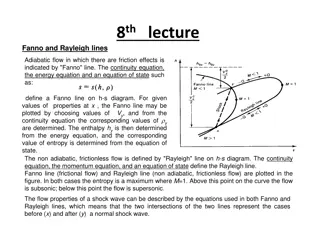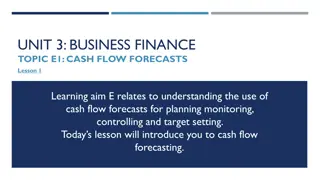Mastering Debate Flow Techniques
The art of flowing in debates, essential for tracking arguments effectively. Discover its significance, best practices, supplies needed, and how to create a structured flow. Enhance your debate skills with proper flowing techniques.
Download Presentation

Please find below an Image/Link to download the presentation.
The content on the website is provided AS IS for your information and personal use only. It may not be sold, licensed, or shared on other websites without obtaining consent from the author.If you encounter any issues during the download, it is possible that the publisher has removed the file from their server.
You are allowed to download the files provided on this website for personal or commercial use, subject to the condition that they are used lawfully. All files are the property of their respective owners.
The content on the website is provided AS IS for your information and personal use only. It may not be sold, licensed, or shared on other websites without obtaining consent from the author.
E N D
Presentation Transcript
What is FLOWING? It is the name given to a specialized form of note taking or shorthand, which debaters use to keep track of all of the arguments in the round. It incorporates specialized and individualized abbreviations, notations, and symbols that allow debaters to keep up with the rapid speed of delivery in most speeches while making a record of as much as possible.
Why is FLOWING so important? It helps you keep track of all of your opponent s or opposing team s arguments. It helps you prevent dropping an argument you or your opponent (or opposing team) previously made. Judges expect it!
Proper supplies: Every debater should have: Legal length paper (legal pad) Good pens Organized file box Not suggested: Flowing on notebook paper Flowing with pencil or gel pen or anything else bright or light
Good flow rules One piece of paper for each position (affirmative or negative) each round Pre-marked columns for each speech Everyone flows every speech (except 1NR can prep during 2NC CX) Stay seated Pull evidence during prep time (CX) NO LONG HAND SENTENCES EVER! You can write things out long hand before debates but never in debates only debate from your flow
What does a good flow look like? It is a grid. All 8 speeches are represented in a CX flow. And all 5 speeches are represented in a LD flow. As a judge, I make a column for CX time, too. It might be beneficial for you as well to write out the questions you plan to ask your opponent during CX in a designated column.
How can I get it all down? Abbreviations Symbols Main idea only (tag or contention) Practice
Never give up! Not flowing is forfeiting the debate against a competent opponent. If you miss something, leave a space: Fill it in during CX Ask your partner Look at their evidence You can even ask for a copy of your opponent s or opposing team s case during CX
What if the other team does not flow? It can be harder to follow a disorganized speech. If that happens, write everything down in a column and tell the judge that you will respond to the points in the order that they made them. You will look awesome in comparison to the non-flow team and the judges will reward your effort.
Stay organized when speaking! Give the judge a road map put your flows in order and stick to it! Follow the order of the points by number, tag, contention, etc.
What else can your flow do for you? Helps you to scout opponents! Helps you to track your performance after each debate, fold your flow in half and write the following on the outside: Round # Opponent What each side ran If you won or lost Judge comments (Critical! Do not pack up, do not walk around--sit, listen, and write)
Filing basics (for CX) Many new debaters lose debates because they have misplaced parts of their files. Following these simple rules will really help: Treat your files with respect. Do not lose pages. Keep files together in a box or something of equal size. One file, one index = one folder. NEVER divide a file up into multiple small parts. Indexes are your key for finding things. You need to keep all pages listed on the index WITH the index. Simple manila folders are best.






